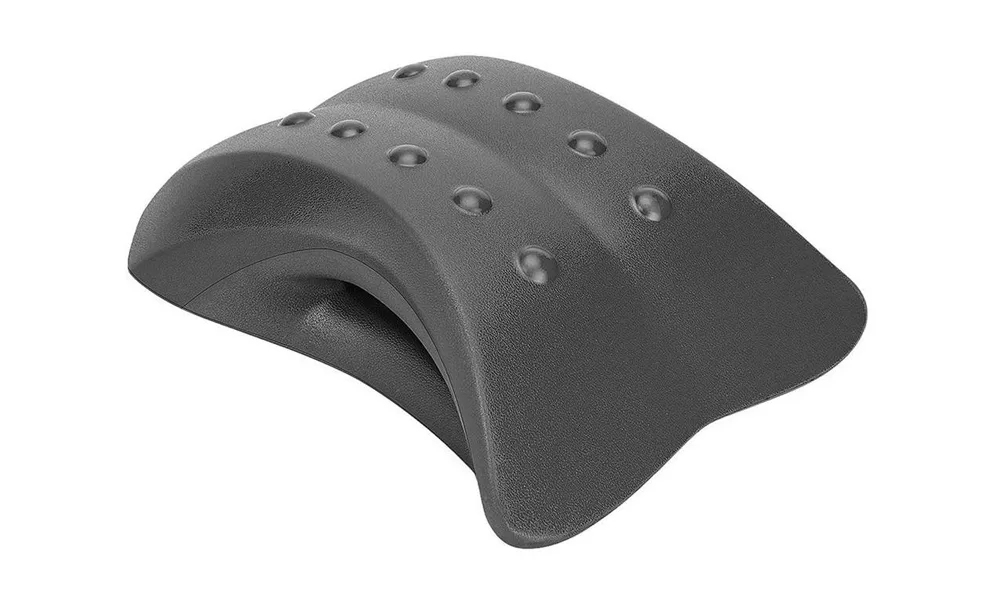In the realm of neck pain relief, neck stretchers have emerged as a popular and effective tool. They are designed to provide relief from chronic neck pain, improve posture, and alleviate tension headaches. Among the various materials used in the manufacturing of these devices, polyurethane, and EVA foam are the most prominent. This article delves into a detailed comparison between polyurethane and EVA foam neck stretchers, providing insights to help you make an informed decision.

Understanding Polyurethane Foam
Polyurethane foam, a type of polymer, is renowned for its durability and comfort. It’s a flexible material that can be molded into various shapes, making it an ideal choice for neck stretchers. Polyurethane foam is characterized by its open-cell structure, which allows air to circulate freely, providing a balance of softness and support. This unique property makes it an excellent material for neck stretchers, as it can conform to the user’s neck shape, providing personalized support and comfort.
Benefits of Polyurethane Foam Neck Stretchers
Polyurethane foam neck stretchers offer numerous benefits. First and foremost, they are incredibly durable. Unlike other materials that may wear out with repeated use, polyurethane foam maintains its shape and support over time. This makes them a cost-effective choice in the long run. Additionally, polyurethane foam provides excellent support. It conforms to the shape of your neck, providing targeted relief to areas of tension and discomfort. This personalized support can help improve posture, alleviate neck pain, and promote overall well-being.
Drawbacks of Polyurethane Foam Neck Stretchers
Despite their numerous benefits, polyurethane foam neck stretchers are not without their drawbacks. One potential downside is their cost. Polyurethane foam is a high-quality material, and as such, products made from it tend to be more expensive than those made from other materials. Additionally, while the open-cell structure of polyurethane foam allows for some air circulation, it may not be as breathable as other materials. This could potentially lead to discomfort during prolonged use, particularly in warmer climates.
Understanding EVA Foam
EVA foam, or ethylene-vinyl acetate, is a type of closed-cell foam known for its flexibility and durability. It’s a lightweight material that’s resistant to cracking and weathering, making it a popular choice for outdoor equipment and athletic gear. In the context of neck stretchers, EVA foam offers a unique combination of softness and support. Its closed-cell structure allows it to maintain its shape under pressure, providing consistent support without sacrificing comfort.

Benefits of EVA Foam Neck Stretchers
EVA foam neck stretchers offer several distinct advantages. They are lightweight and flexible, making them easy to use and transport. This can be particularly beneficial for individuals who travel frequently or wish to use their neck stretcher at work or while on the go. Additionally, EVA foam is resistant to water and moisture, making it easy to clean and maintain. This can be a significant advantage for individuals who use their neck stretcher frequently or in high-sweat environments.
Drawbacks of EVA Foam Neck Stretchers
While EVA foam neck stretchers are popular due to their lightweight nature and affordability, they do come with a few drawbacks. One of the main concerns is their durability. EVA foam, while flexible and comfortable, may not withstand long-term use as effectively as other materials like polyurethane. Over time, the foam can lose its shape and elasticity, reducing its effectiveness in providing the necessary support for the neck. Additionally, EVA foam is sensitive to UV light, which means it can degrade and discolor if exposed to sunlight for extended periods. Lastly, while EVA foam is generally comfortable, its softness might not provide the firm support needed by individuals with severe neck pain or those requiring more substantial neck traction.
Polyurethane Foam vs EVA Foam: Which is Better?
The choice between polyurethane and EVA foam ultimately depends on individual needs and preferences. Polyurethane foam is known for its durability and ability to maintain its shape and firmness over time, making it a suitable choice for those needing long-term use or more substantial support. It’s also resistant to UV light, which contributes to its longevity. However, polyurethane foam is typically more expensive than EVA foam and may not be as soft or comfortable for some users.
On the other hand, EVA foam is lighter, more flexible, and generally more comfortable due to its softness. It’s also more affordable, making it a popular choice for many. However, its durability and firmness may not match that of polyurethane foam, and it may not provide the level of support needed by individuals with severe neck pain.

Conclusion
In conclusion, both polyurethane and EVA foam neck stretchers have their unique advantages and drawbacks. Polyurethane foam offers durability and firm support, making it suitable for those with severe neck pain or those requiring a more robust support system. On the other hand, EVA foam provides a softer, more flexible, and cost-effective solution for those seeking comfort and light support. Ultimately, the choice between the two will depend on individual needs, preferences, and budget. It’s always recommended to consult with a healthcare professional before making a decision to ensure the chosen solution aligns with the individual’s specific health requirements.

